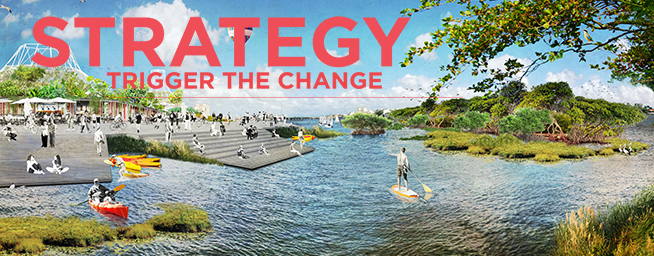
Last Fall we were teaching at the Master in Workspace Design at IE University, leading the Technology Lab; so this exploration became a continuation of our previous research and work.
We have been studying the contemporary way of working / thinking / living, analyzing the current phenomena affecting the spaces where the working activities take place. We believe that the digital revolution and contemporary socio-political dynamics call for reflection on the way we work. Spaces and instruments for working, methods and hierarchies, places and distances have all been brought into question. Beyond and around working, there is an ongoing change of paradigm that involves almost every aspect of culture and society. The way we address and manage processes, products and knowledge is evolving aided by new technological possibilities and critical “meta” reflections: From competition to collaboration and cooperation; from centralization to P2P; from pyramidal structures to grassroots, horizontal ones; from professional secret to transparency; from private R&D to crowdsourcing; from intellectual property restrictions to copyleft and free/open source initiatives, from well finished products or services to open roadmaps that embrace perpetual beta…
Our research focused on the following challenges:
How can architectural, physical work space, aided by its digital equivalent through hybrid interfaces, incorporate those emerging ways in order to support further exploration?
How can we, architects/designers, provide the best built environment for these emerging impulses to become fully developed?
Our philosophical approach divided the subject into three main spheres of research:
+ The Physical Sphere
Understanding the contemporary workspace as an innovative and experimental balance between design (size, material, color, behaviour, structure, relative position between elements,…) and conditioning (hygrothermal comfort, privacy, noise levels, lighting,…) to be implemented so as to be responsive and truly supportive.

+ The Digital Sphere
We focused on the digital “cloud” associated to each space to enable experimental environments, unprecedented interactions and ways of communicating, or wider, faster, more open-access to knowledge. We considered the digital sphere in workspaces as a unique open environment, extremely user-friendly, flexible and customised according to the specific circumstances it will be used for: supporting internal work, influencing digital marketing strategies, involving customers and external visitors, instigating social activities.

+ Physical-Digital Interaction
We design spaces that enable the best interaction between users relying on a physical comfort and the digital layer. We focus our work on how mutual management, communication, control, connection and interaction can work between the physical and the digital. This specifically involves physical interfaces that operate on the digital side and digital interfaces that influence the physical space.

In order to achieve the integration of physical and digital spatial configuration, we developed a design strategy around four main actions we believe as relevant for an innovative workspace:

– Inspiring
Innovation requires firstly an inspiring environment in order to provide an experimental incitement to creativity through different channels.
We believe in the possibility of feeding creativity through a series of activities that inspire our brain and stimulate it to go beyond boundaries and create big ideas.
– Well Being
A workspace should provide a high comfort level for the people using it. The environment should be equipped with all the facilities that ensure the best ambience for every particular situation and need.
– Challenging
Being satisfied by its own conditions, sometimes is not the best way to bring innovation. The only possibility to improve is going beyond and accepting challenges. In the contemporary work scene, innovation is an indisputable fact. But, for instance, how to stimulate a company that is already in the innovation sector to exceed and excel constantly? We believe that a good training in accepting new challenges even in the small everyday things could help a lot. Through simple dynamics that boost self confidence, cooperation between members of a team, enthusiasm towards the new and unknown and establishing an informal and playful way to invent new solutions for everyday issues as well as exceptional conditions is an excellent way of ensuring high levels of performance.
– Networking
We believe the strength of a successful company is in the quality of its structure and components, but just as important is the network that is able to create, expanding its connections and sharing an learning with/from others.
We keep this line of research open. So, if you want to contribute with it, by sharing a paper or article around the topic, we will be happy to publish it, to spread the ideas and inspire others!











